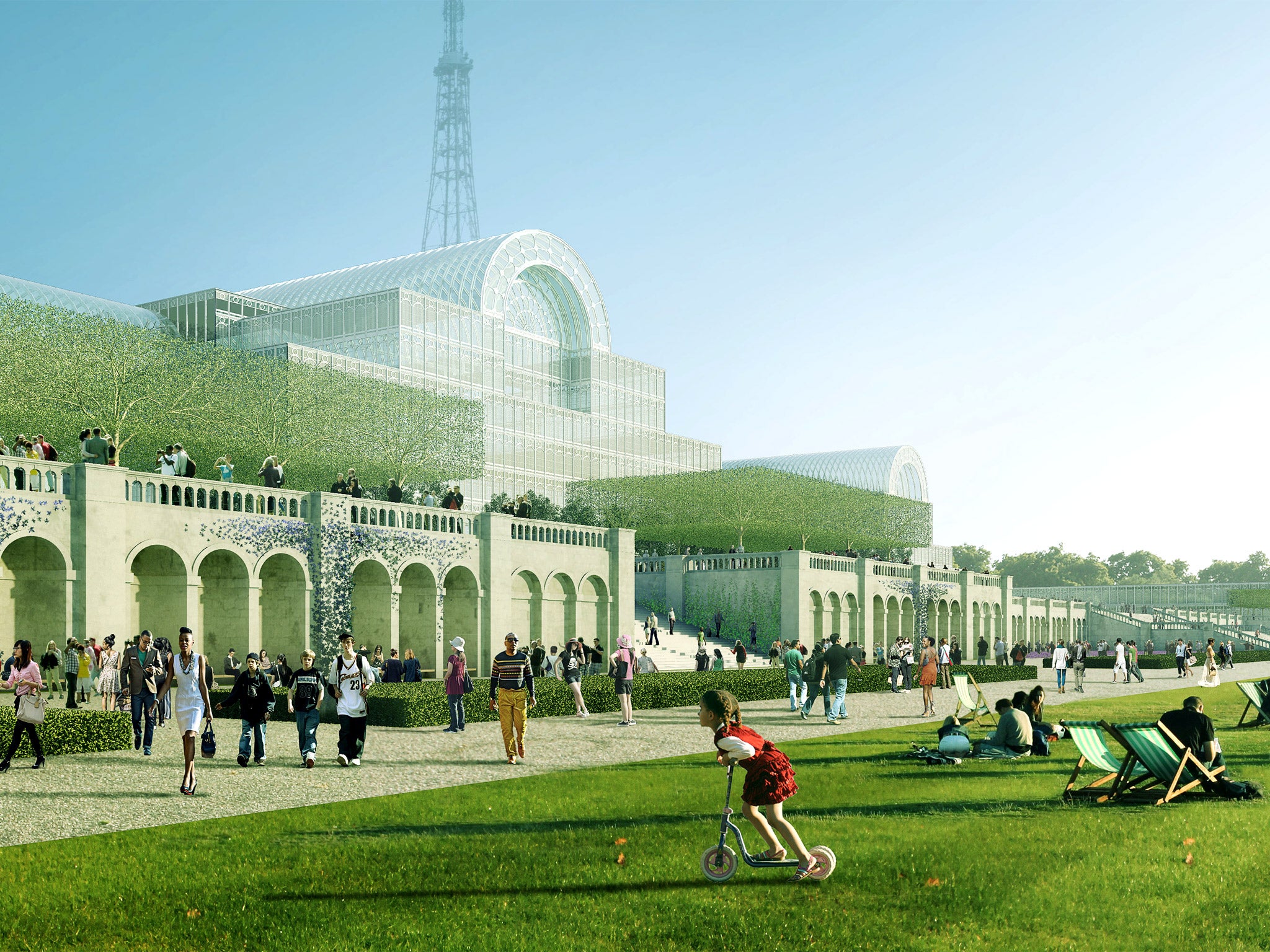A Chinese developer plans to rebuild London's 'heroic' Crystal Palace - but will it be a new building or a piece of 'duplitecture'?

Your support helps us to tell the story
From reproductive rights to climate change to Big Tech, The Independent is on the ground when the story is developing. Whether it's investigating the financials of Elon Musk's pro-Trump PAC or producing our latest documentary, 'The A Word', which shines a light on the American women fighting for reproductive rights, we know how important it is to parse out the facts from the messaging.
At such a critical moment in US history, we need reporters on the ground. Your donation allows us to keep sending journalists to speak to both sides of the story.
The Independent is trusted by Americans across the entire political spectrum. And unlike many other quality news outlets, we choose not to lock Americans out of our reporting and analysis with paywalls. We believe quality journalism should be available to everyone, paid for by those who can afford it.
Your support makes all the difference.With its very light weight and advanced modular construction – inspired by railway technology and designed in a mere seven days – the Crystal Palace of 1851 sits very heavily on our collective consciousness. The most heroic building of all time? Very possibly. It always was, and is again today, a test for taste.
"Crystal Palace" was Punch magazine's name for The Great Exhibition of the Industry of All Nations. Its sponsor, Prince Albert, who had a keen sense of a technological future, saw it as an opportunity "to wed mechanical skill with high art". Albert's Memorial sits on its original site. But the greater memorial was Albertopolis: the astonishing universities and museums of South Kensington.
The great Victorian critic John Ruskin disliked the Crystal Palace, dismissing Joseph Paxton's ingenious design as a "giant greenhouse". Ruskin's aversion to sex might have been excited by the suggestive, intromittent action of the vast steam engines' pistons, which were some of its exemplary exhibits.
The year 1851 was perhaps the absolute top dead centre of the rising curve of British power and prestige: The Great Exhibition was its advertisement. And with symbolic precision, the structure was painstakingly removed to Sydenham, where it burnt magnificently to the ground on 30 November 1936.
Now the Chinese developer ZhongRong Group of Shanghai proposes to rebuild it. ZhongRong has, as visitors to Pudong know, better credentials as an enthusiastic developer than a tasteful patron. There are other artistic problems. The US architectural historian Bianca Bosker has given us a useful term: duplitecture. The Chinese, if one may generalise, do not have a European view of authenticity. Recent research shows that the Chinese, busy on merciless campaigns of trophy shopping, thought Gucci was British.
The same category error applies to architecture. There are many gross examples of duplitecture in mainland China. I am especially fond of the fake Champs Elysées in Zhejiang, which culminates in a 300ft Eiffel tower, sadly located in a dismal, litter-strewn field. Nearby, is a replica of the Piazza San Marco in Venice, which ingeniously doubles as a basketball court.
No one is quite sure what to expect in Sydenham-Penge, although I do not expect great wonders. A 1990 Act of Parliament requires any new building on the site to acknowledge the "translucent and delicate" original. And to be similar in size. If a crass copy is going to happen, we know what to expect: a developer called Trammell Crow built InfoMart in Dallas in 1985. Like Susan Sontag's definition of camp, it is bad to the point of being ridiculous, but not to the point of being funny.
What might we expect of the shortlisted architects going to work with ZhongRong's capitalist tools on the Sydenham-Penge borders? Will they be constrained or let their imaginations soar? Zaha Hadid now partners Anish Kapoor: each specialises in over-sized fatuous bio-morphic one-liners of limited functionality. Nicholas Grimshaw is an architect who may be considered by some to have his best work behind him, as is Richard Rogers. David Chipperfield is an unstoppably ambitious technocrat, two steps behind popular taste. More modest practices are Marks Barfield, masters of entertainment architecture with the London Eye and the Tate Pier to their credit, or Haworth Tompkins, whose ingenious remodelling of the London Library was handled with great tact. Only the ever-eager Norman Foster is missing.
Will we get duplitecture or a fine new building? Inspiration and duplication can easily be confused. Do we live in a world where nothing is new, where everything is a re-edition, a reflection or a reworking of something else? Then again, why do the Chinese want to "fake it"? More importantly, why do we let them do it?
Prince Albert had vision and confidence of historic significance. That's why we remember his Crystal Palace. Whether we have architects with audacity and vision and genius to match Albert and Paxton we will soon know. Personally, I doubt it. Penge will soon be Pudong and the proud among us will weep.
Join our commenting forum
Join thought-provoking conversations, follow other Independent readers and see their replies
Comments